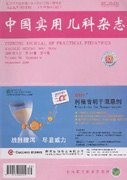Nutrition support is an essential management of critically ill patients,and enteral nutrition conforms to the physiological state of the body,which can maintain the integrity of intestinal mucosal structure and function,thus ensure the enough intake of calories and protein and preventing the risk of intestinal bacterial translocation effectively. Endoscope-guided placement of feeding tubes is a kind of simple,direct and accurate method to establish enteral nutrition in clinic. The method has high success rate,relatively simple operation. Thus,it is a safe and effective treatment for enteral nutrition, which is worthy of clinical application.

